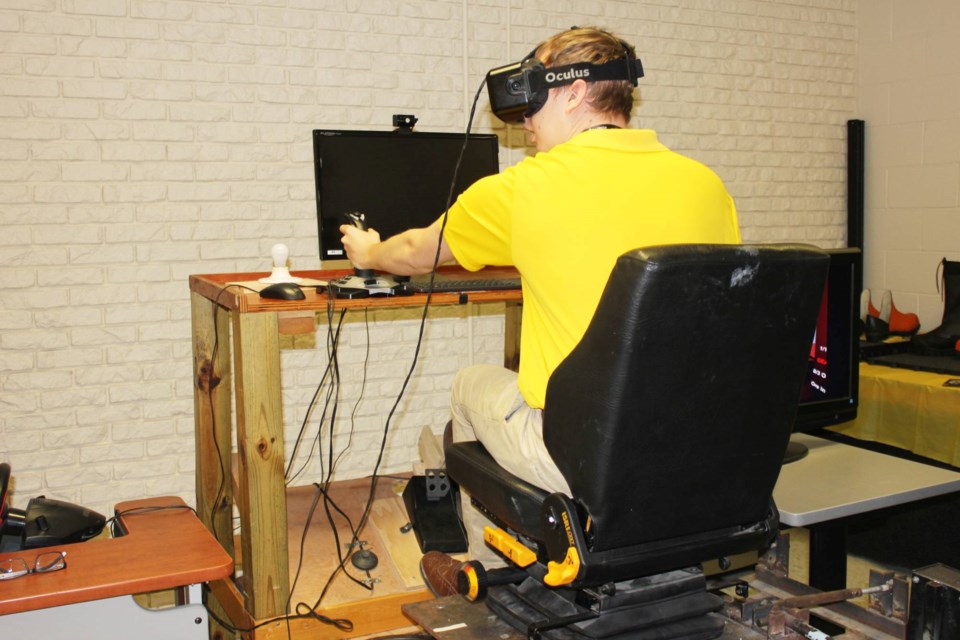Nicholas Schwabe kept a close eye on the road ahead, but his underground vehicle suddenly picked up speed on the rocky mine terrain, jolting him alarmingly forward in his seat before he hit one of the walls.
Fortunately for the Laurentian University student, this was just a learning experience using the Centre for Research in Occupational Safety and Health (CROSH)'s new workplace simulator. He was safe in a lab in Sudbury wearing goggles and surrounded by fascinated spectators.
France Gélinas, Nickel Belt MPP, who was at the centre of the April 29 announcement showcasing this new piece of learning technology, took the opportunity to have some fun with the controls.
Laurentian University's CROSH is ramping up their research efforts thanks to more than $1.2 million in funding for two new initiatives: the workplace simulator Schwabe used — called W-SIM — and a mobile research lab called M-CROSH.
The funding breakdown consists of $500,000 from the Ontario Ministry of Labour for M-CROSH, plus another $492,000 in research capacity grants. The Canadian Foundation for Innovation is contributing $143,000 for the simulator and the Goodman School of Mines is providing $50,000 each for the simulator and mobile research lab.
The workplace simulator consists of a robotic motion platform that mimics machinery motion and vibrations, an environmental chamber that replicates temperature and humidity, and a virtual reality eye tracker that creates an image for the trainee, but also measures where they are looking.
The different components can be used together or alone to imitate more than just a mining scenario. Typical, and atypical, mining, forestry, steel manufacturing, transportation and firefighting environments are some that be recreated to allow workers to gain practical experience in field-like conditions.
The goal of the W-SIM is to support research in areas including vibration-related injuries, mobile equipment accidents, workplace exertion, fatigue and recovery.
The simulator will likely be available for use by 2018, but CROSH is currently waiting on more funding to complete that project. The W-SIM, on the other hand, should be ready around June 2017, and the request for proposals for the construction of the lab will open soon.
The lab will allow researchers and workers in the remote and rural communities of Northern Ontario to connect and participate in CROSH's research.
The lab's potential areas of study are broad and include accident prevention, vibration-induced injury prevention, energy expenditure and nutrition, heat stress, fatigue and sleep hygiene, and mental health and work life quality.
Like the simulator, it can be used across a range of sectors, such as mining, forestry, construction and health care.
“We're going to be able to do some really amazing things,” said CROSH's research chair, Tammy Eger. “We'll be able to visit my hometown of Keewatin (outside Kenora) with it.”
The two projects are yet another opportunity for industry involvement with CROSH, and Eger anticipates new partnerships will be announced as the projects reach their final stages. This reflects both CROSH and Laurentian's commitment to engage community and industry as they push their research portfolios forward.
“This brings together our partners in labour, industry and government, and the research being carried out will affect thousands of people for years to come,” said the university's president, Dominic Giroux.
“CROSH is a true partnership — academia, labour and employers, as well as the public sector and government. We have ample proof of how such partnerships work in our mining, health, safety and prevention review which concluded last year,” said Sudbury MPP Glenn Thibeault.
“I am confident this grant we are providing will lead to safer work in Ontario, because everyone deserves to go home after work and see their family.”




